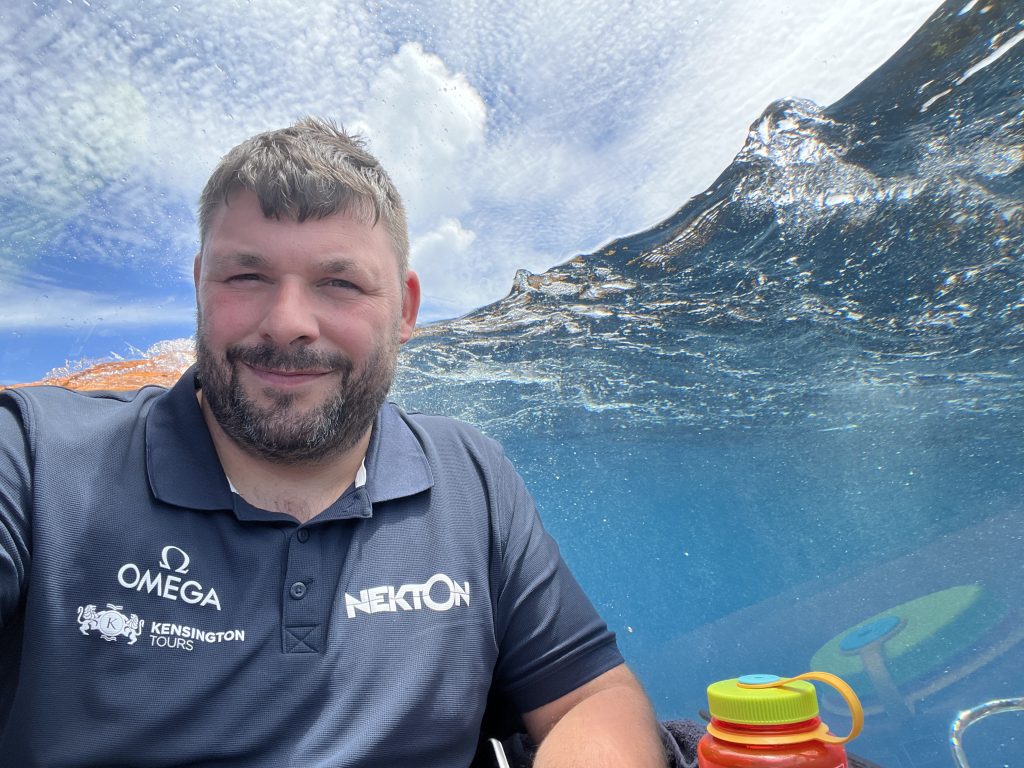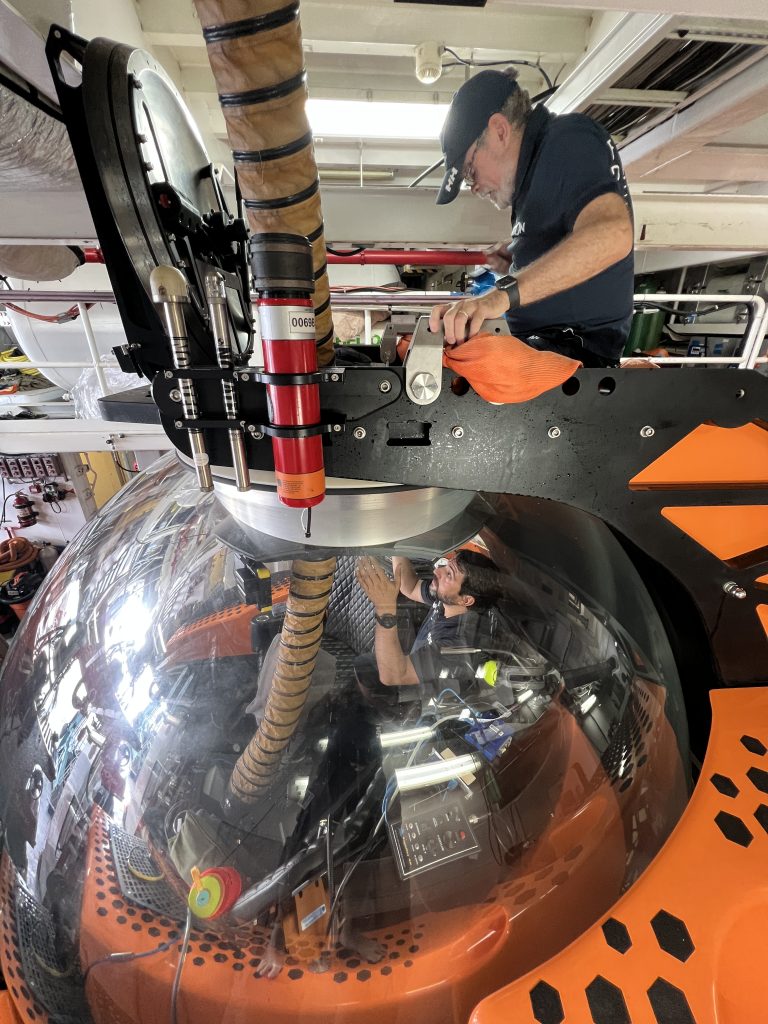Thanks Charlie for our first ever question!
Answered by Leighton Rolley, Science Systems Manager/Pilot, REV Ocean
It may come as a surprise that even though I am a submersible pilot I don’t like the idea small spaces! The idea of potholing (caving) does not appeal to me one bit.
Yet I am a sub pilot.
Most people I chat with have a misconception of submersibles as cold, tiny, dark metal spheres with small viewports and with these thoughts comes the idea of claustrophobia,
However, most modern submersibles feature a thick Acrylic Sphere that is extremely strong but also optically clear. The moment the sub is placed in the water it is as if the barrier between you and the water is gone – it’s that clear. We have scientists who hardly even believe that there is a barrier between them and the sea and reach out only to touch the almost invisible acrylic of the sphere. With such clarity I find that the majority of people who thought they would be claustrophobic diminishes and the amazingness of this moment trumps their initial fears. Most scientists I work with, even those who expressed fears of claustrophobia end up so engrossed and so immersed in the dive that they forget any fears.
Here is an image of me sat in the 30cm thick sphere of DSV Aurelia. The barrier between me and the water is almost invisible.

And here’s a view of a scientist entering the sub prior to a mission.

However, it’s important to note that the experience of claustrophobia is highly individual, and the factors influencing it can be complex and multifaceted. Pilots and Surface Officers involved in submersible operations are adept at spotting people who are nervous and helping them work through any initial anxieties and respect their decision to dive or stay onboard.
However, from experience I will say that the majority of people quickly forget they were worried and become so in awe of the moment that they are upset when the dive is over and are asking “when can we next dive!”